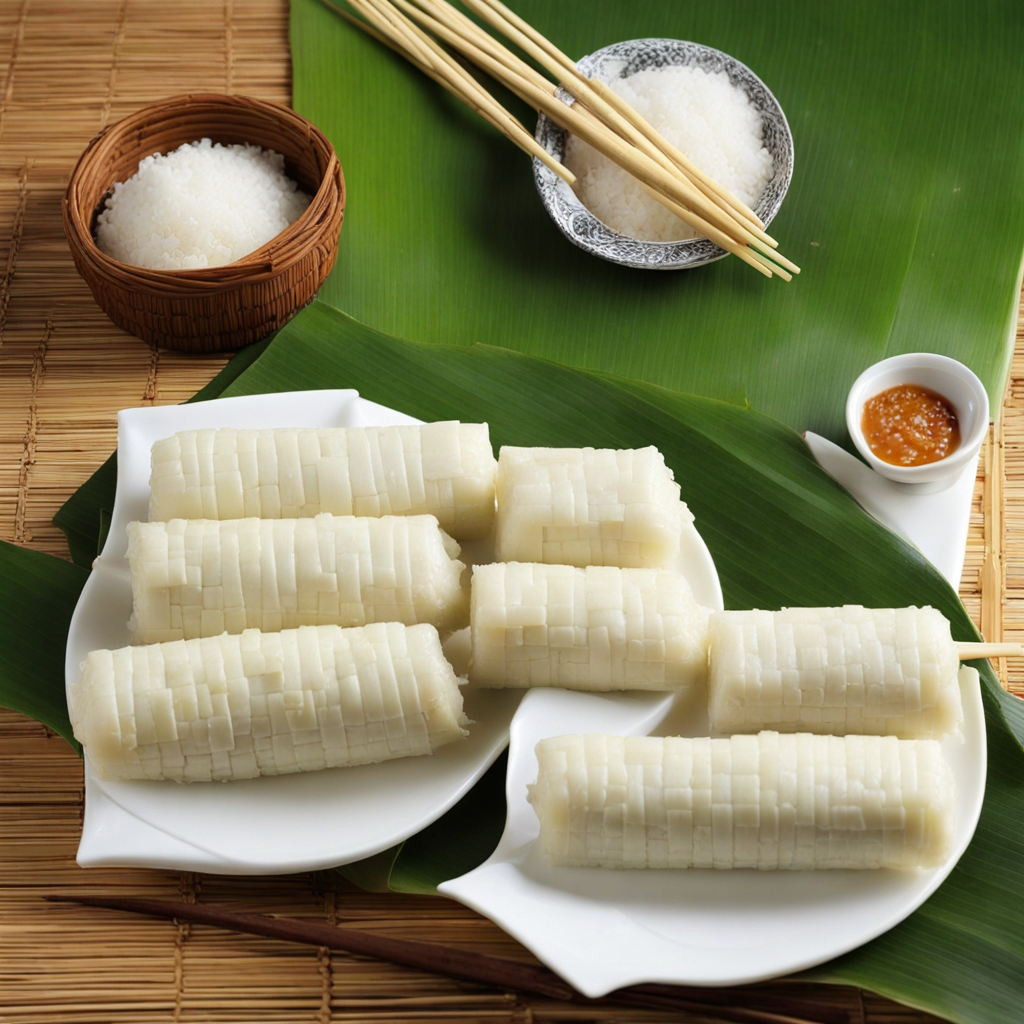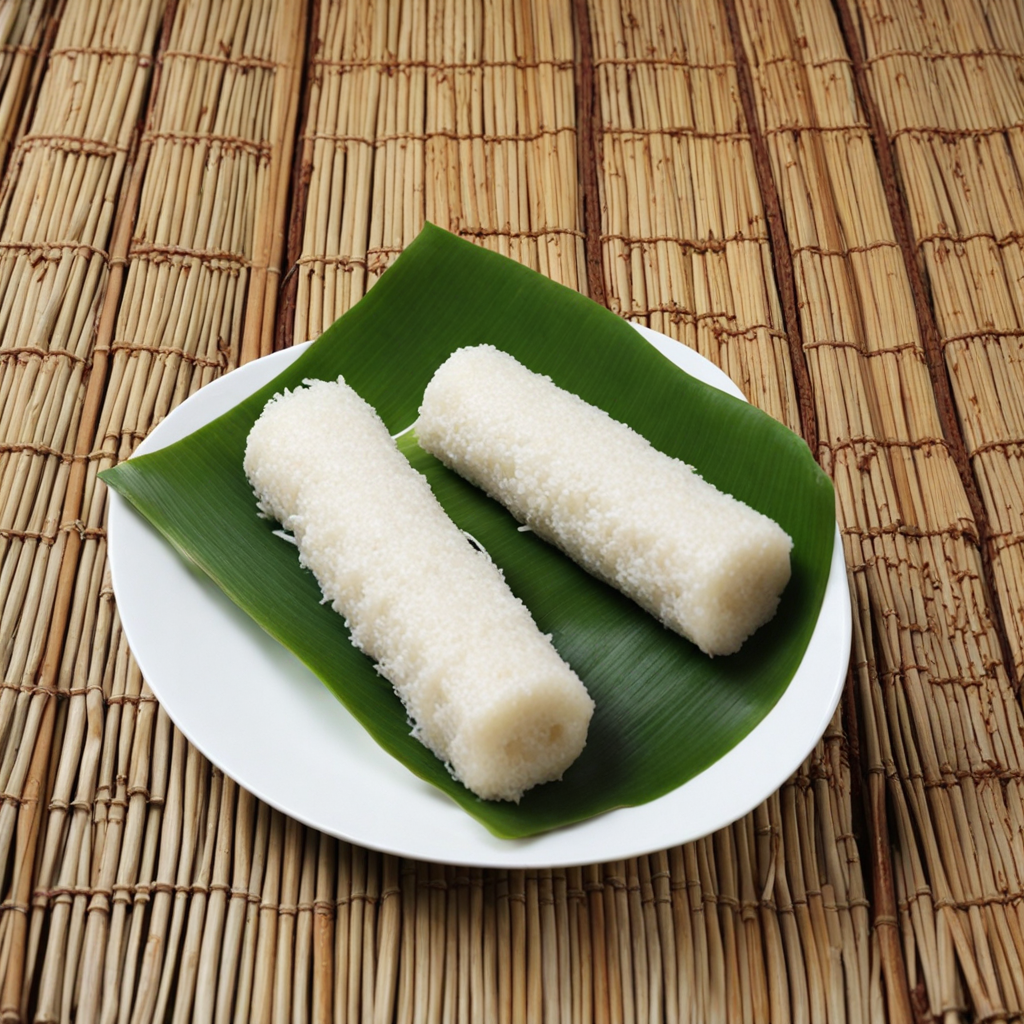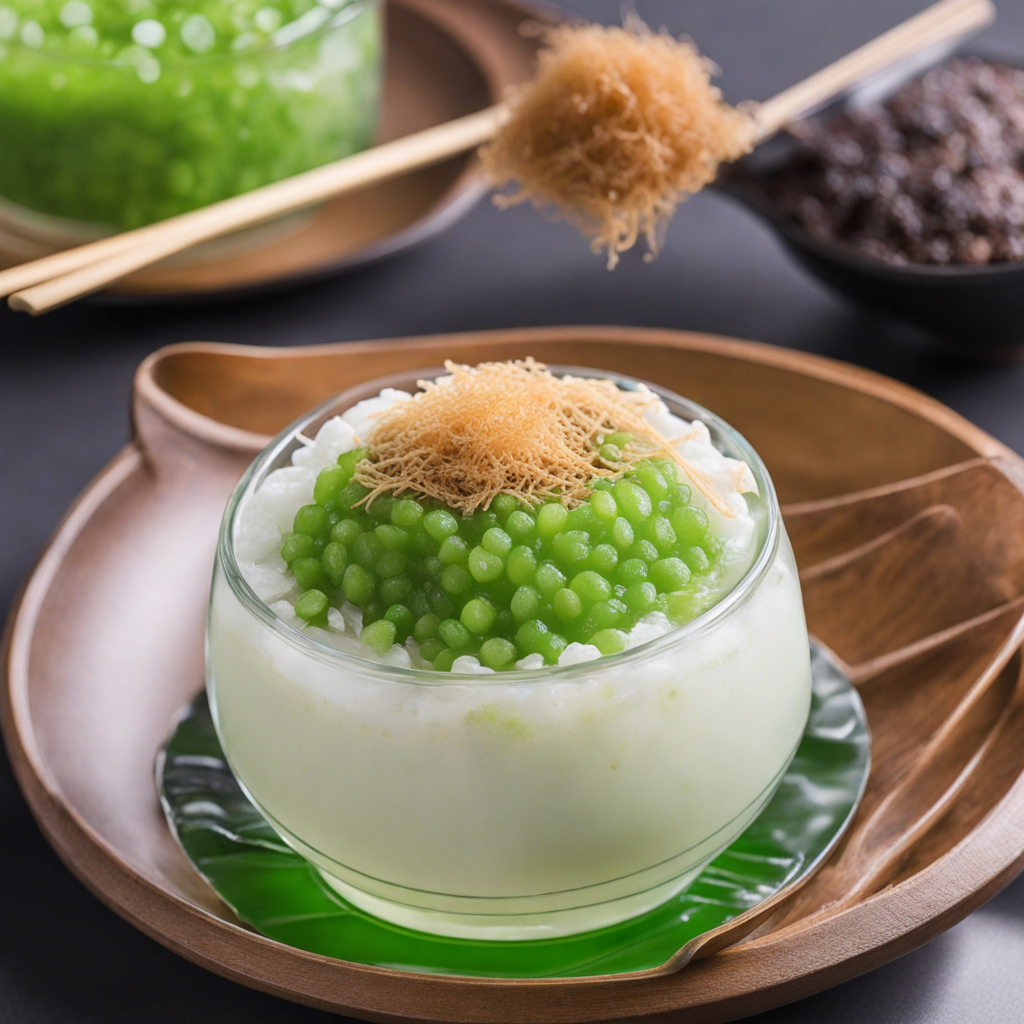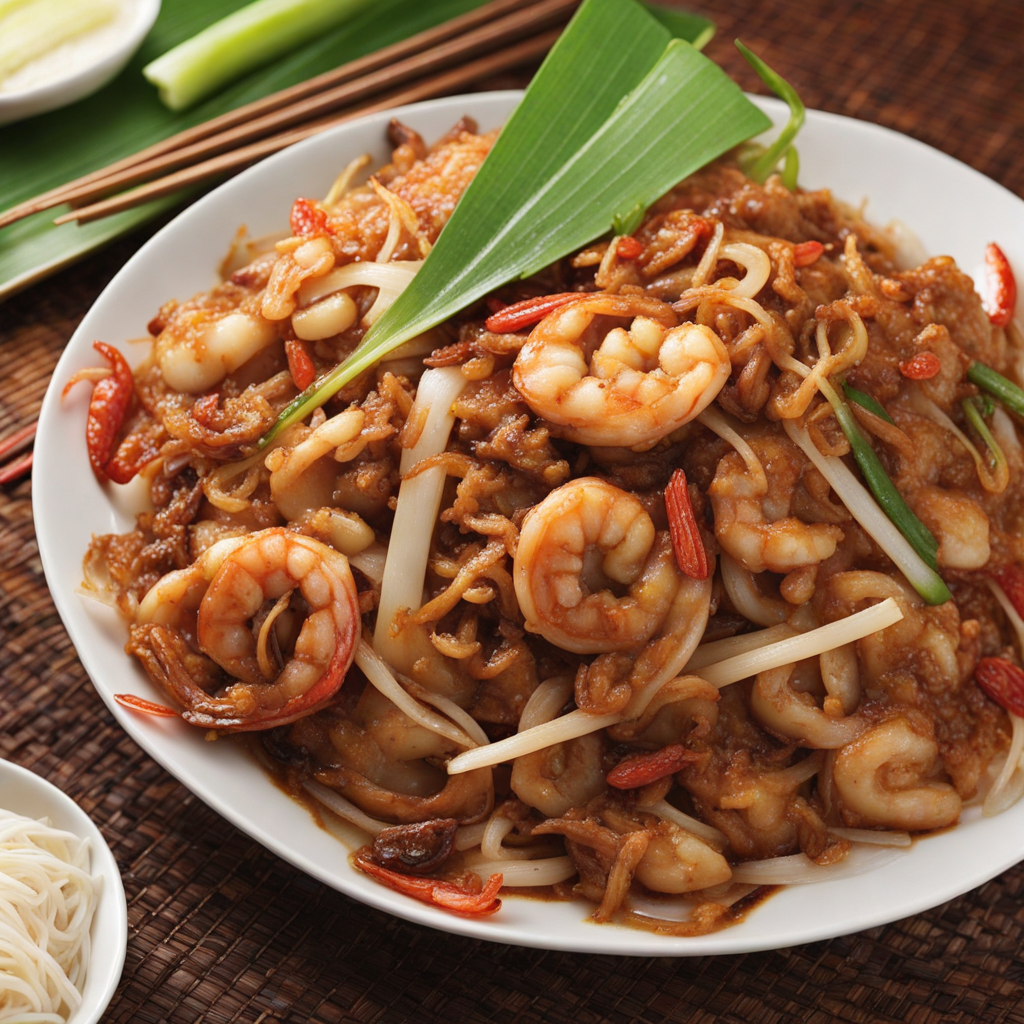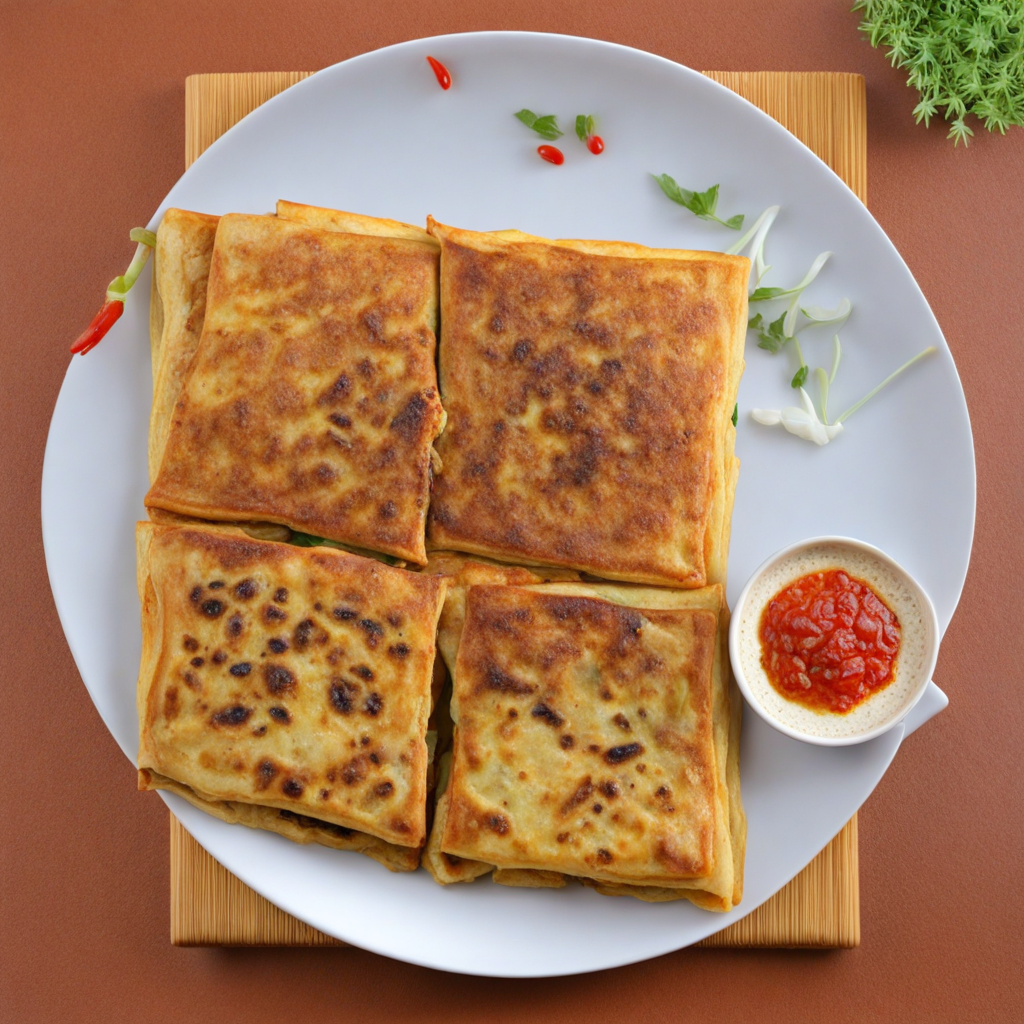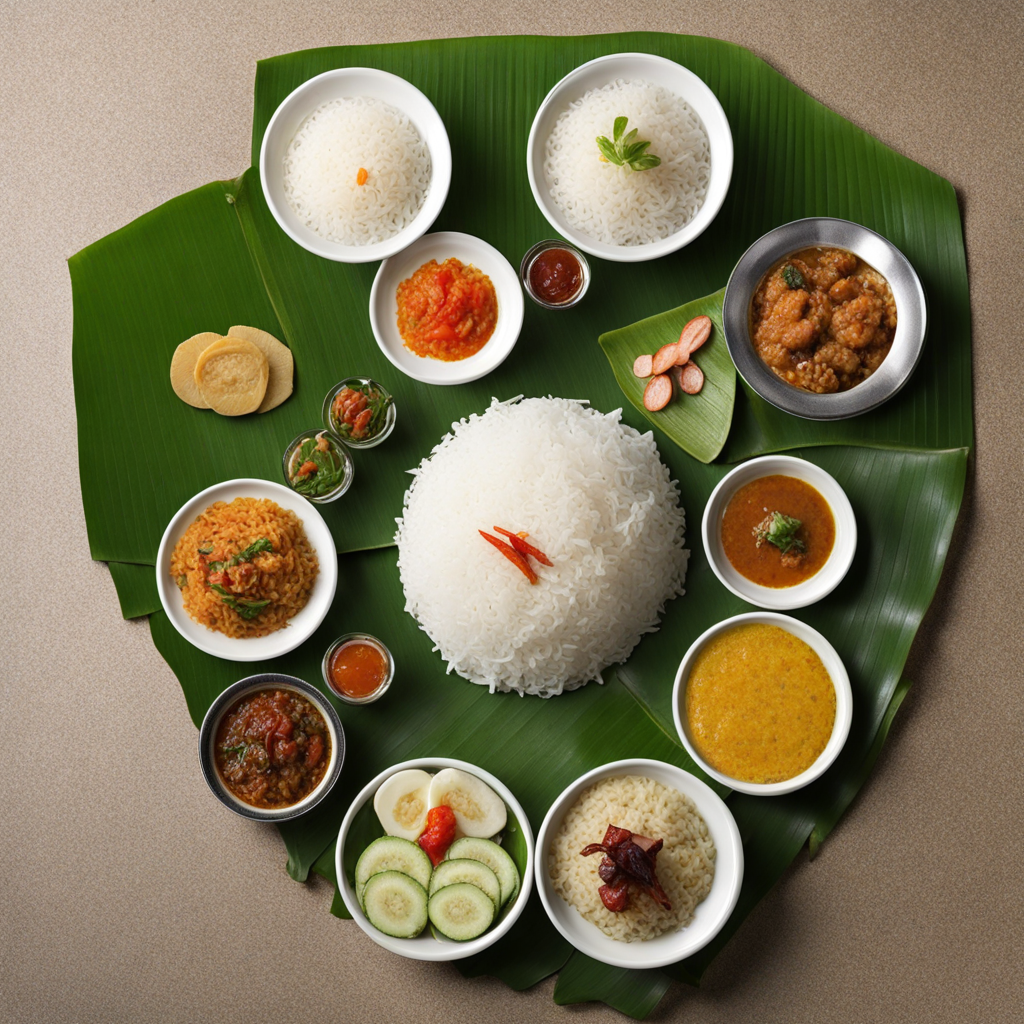Lemang
Lemang is a traditional Malaysian dish that embodies the essence of Southeast Asian culinary heritage. It is made from glutinous rice, which is soaked in coconut milk and then packed into hollowed bamboo tubes. The tubes are typically lined with banana leaves, which not only impart a subtle aroma but also prevent the rice from sticking to the bamboo. As the lemang is cooked over an open fire, the heat infuses the rice with a gentle smokiness, creating a delightful contrast with the creamy richness of the coconut milk. The result is a beautifully firm yet tender rice that has a slightly chewy texture, making each bite a unique experience for the palate. Lemang is often enjoyed during festive occasions, particularly during the celebration of Eid al-Fitr, when families come together to feast. It pairs exceptionally well with a variety of savory dishes, such as rendang, a rich and spicy meat stew, or serunding, a spiced meat floss. The combination of lemang with these dishes creates a harmonious balance of flavors, with the lemang’s subtle sweetness complementing the bold spices of the accompaniments. The communal aspect of sharing lemang adds to its appeal, as it brings people together to savor the delightful tastes of Malaysia. This dish is not just about flavor; it encapsulates a cultural tradition that has been passed down through generations. The preparation of lemang can be a communal affair, with families and friends gathering to create this beloved delicacy, often during special occasions. The sight of lemang grilling over an open flame, with the tantalizing aroma wafting through the air, is an experience in itself. For those looking to discover a new taste, lemang offers a glimpse into Malaysia’s rich culinary tapestry, inviting you to explore the harmonious blend of textures and flavors that define this unique dish.
How It Became This Dish
The Culinary Journey of 'Lemang': A Malaysian Delight Lemang is a traditional Malaysian dish that embodies the rich cultural tapestry of the country, particularly among the Malay community. This unique food item, made primarily from glutinous rice, coconut milk, and salt, is cooked in a bamboo tube, imparting a distinctive flavor and aroma that is cherished in various celebrations and gatherings. To appreciate lemang fully, we must delve into its origins, cultural significance, and how it has evolved over time. #### Origins of Lemang The roots of lemang can be traced back to the indigenous peoples of Malaysia, particularly the Orang Asli, who were known for their resourcefulness in utilizing natural resources for sustenance. The practice of cooking rice in bamboo tubes is believed to have originated from these communities, who would use bamboo as a cooking vessel over open fires. The method was not only practical but also ensured that the rice absorbed the unique flavors of the bamboo, creating a dish that was both aromatic and delicious. As the Malay culture developed, particularly during the Malacca Sultanate in the 15th century, food began to play a significant role in social and religious events. Lemang became associated with celebrations, especially during the festive season of Eid al-Fitr, marking the end of Ramadan. It was during these times that families would prepare lemang to share with relatives and friends, symbolizing unity and gratitude. #### Cultural Significance Lemang holds a special place in the hearts of many Malaysians and is particularly significant during festive occasions. It is commonly served alongside rendang, a rich and flavorful meat dish, often made with beef or chicken that has been slow-cooked in coconut milk and a blend of spices. This pairing is not merely a culinary choice; it represents the harmony of flavors and textures, showcasing the richness of Malaysian cuisine. The preparation of lemang is often a communal activity, with families gathering to make it together. This social aspect of cooking and sharing lemang contributes to its cultural significance. It fosters bonds between family members and friends, reinforcing the values of togetherness and cooperation. In many Malay households, the tradition of preparing lemang is passed down through generations, with each family adding their unique touch to the recipe, thereby enriching its cultural heritage. Lemang is also associated with various rites of passage, including weddings and other important ceremonies. Its presence at significant life events underscores the dish's role in marking milestones and celebrations, further embedding it into the cultural fabric of Malaysian society. #### Development Over Time While lemang has deep historical roots, its preparation and presentation have evolved over the years. Traditionally, the glutinous rice used in lemang was soaked overnight before being mixed with coconut milk and a pinch of salt. The mixture was then packed tightly into bamboo tubes, which were sealed at one end with banana leaves. The tubes were placed over an open flame or a slow-burning fire, requiring careful attention to ensure even cooking and prevent burning. As Malaysia underwent modernization, the method of preparing lemang adapted to contemporary conveniences. Today, while many still honor the traditional bamboo cooking method, some have begun to use modern cooking techniques, such as pressure cookers or rice cookers, which significantly reduce cooking time. This shift reflects a broader trend in Malaysian cuisine, where traditional practices are preserved while also adapting to modern lifestyles. In urban areas, the availability of ready-made lemang has surged, with vendors often selling it during the festive season. These commercially produced variations sometimes incorporate different flavors and fillings, such as durian or sweetened coconut, catering to diverse palates. However, this commercialization has sparked discussions about the authenticity of lemang and the importance of preserving traditional cooking methods. Moreover, lemang's popularity has transcended cultural boundaries, becoming a beloved dish not only among the Malays but also among other ethnic groups in Malaysia. Its unique flavor profile has made it a sought-after dish in various culinary events and festivals, showcasing the unity in diversity that defines Malaysian culture. #### The Global Perspective In recent years, Malaysia has gained recognition on the global culinary stage, with lemang being introduced to international audiences. Food festivals and cultural events have played a crucial role in this exposure, allowing people from different backgrounds to experience the flavors of lemang firsthand. The dish has also found its way into fusion cuisine, where chefs experiment with traditional ingredients to create innovative dishes that reflect contemporary culinary trends. Social media has further amplified this trend, with food bloggers and influencers sharing their experiences of lemang, showcasing its preparation, and highlighting its significance in Malaysian culture. This newfound visibility has sparked interest among food enthusiasts worldwide, leading to an appreciation of lemang as a symbol of Malaysian heritage. #### Conclusion Lemang is more than just a dish; it is a reflection of Malaysia's rich cultural history and the values that bind its people together. From its origins in the indigenous communities to its modern adaptations, lemang has evolved while retaining its essence as a cherished culinary tradition. It represents the unity of flavors and the importance of community, making it an integral part of Malaysian identity. As Malaysia continues to embrace its culinary heritage and share it with the world, lemang stands as a testament to the enduring legacy of traditional foods. Whether enjoyed during festive celebrations or as part of everyday meals, lemang will undoubtedly remain a beloved dish, symbolizing the warmth, hospitality, and rich cultural diversity that defines Malaysia.
You may like
Discover local flavors from Malaysia


